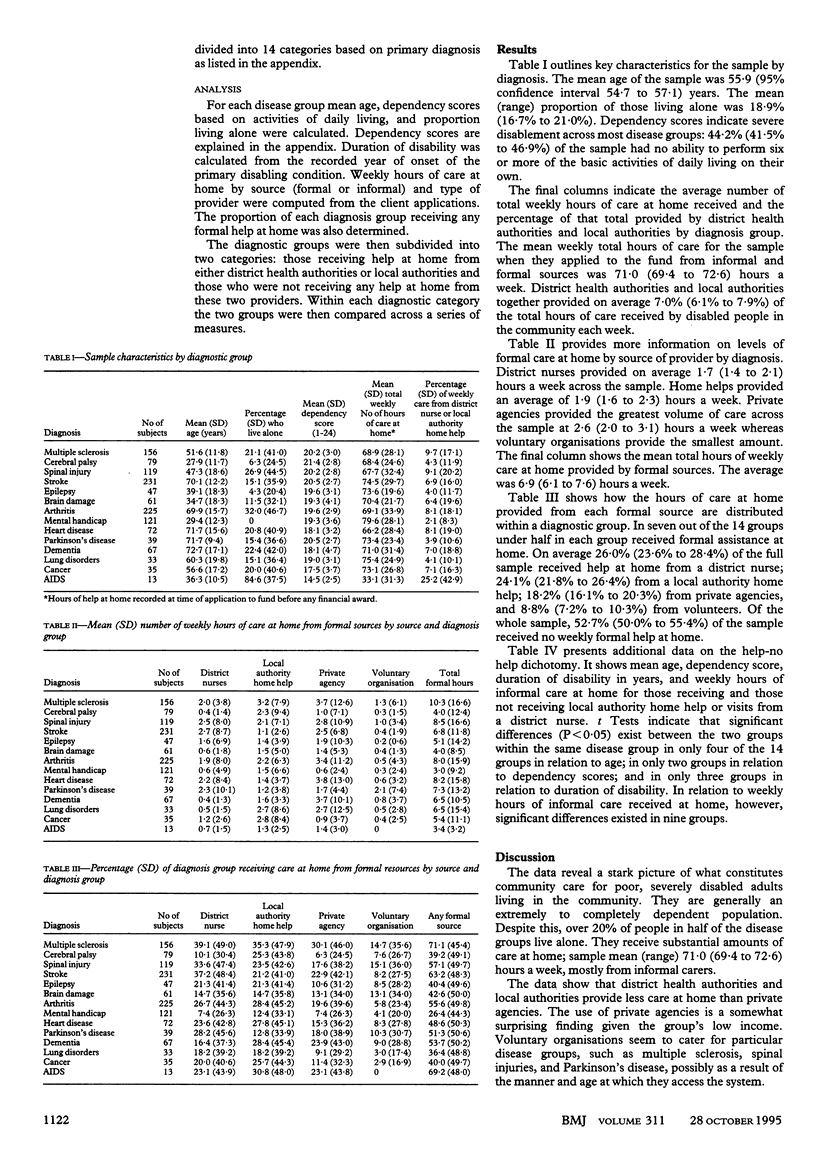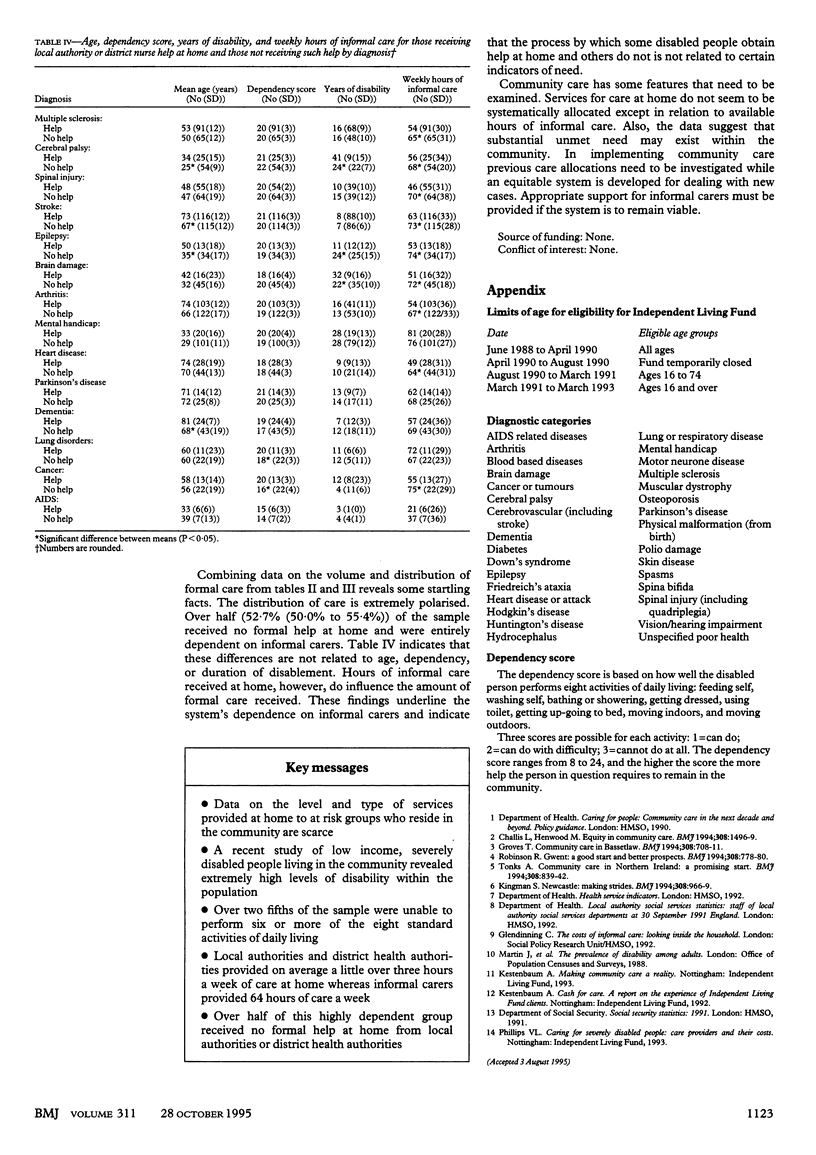Abstract
OBJECTIVE--To examine the volume and distribution of formal and informal care received by severely disabled adults living at home in the community on low incomes according to type of disease. DESIGN--Analysis of computerised reports from social workers which include information on disabling conditions and on the weekly hours of care at home from formal and informal sources. SUBJECTS--1298 severely disabled people aged 16 to 98 who received financial assistance from the Independent Living Fund in 1991-2. RESULTS--Over half (733; 56.6% (53.8 to 59.2)) of the sample were completely unable to perform five or more of the basic activities of daily living. On average the whole sample received 6.8 (6.1 to 7.6) hours of care at home a week from formal sources and 64.2 (62.4 to 65.9) hours from informal sources. In seven out of 14 disease groups, less than half in each group received any formal help at home. There were large differences in the volume of formal care within groups. In most cases no significant differences were found within diagnostic groups between those receiving care at home from district health authorities or local authorities, or both, and those who received no help at home with regard to age, dependency score, and duration of disability. Weekly hours of informal care were an important determinant of who received formal help in nine out of 14 groups. CONCLUSIONS--The amount of care received at home by low income, severely disabled people from formal sources differs across and within diagnostic groups. The fact that the variation was not systematically related to age, dependency, or duration suggests that the existing distribution of community care resources needs to be examined. Weekly hours of informal care and diagnosis seem to affect the volume and type of care received. The methods by which people in need of assistance receive help merit further investigation.
Full text
PDF


Selected References
These references are in PubMed. This may not be the complete list of references from this article.
- Challis L., Henwood M. Equity in community care. BMJ. 1994 Jun 4;308(6942):1496–1499. doi: 10.1136/bmj.308.6942.1496. [DOI] [PMC free article] [PubMed] [Google Scholar]
- Groves T. Community care in Bassetlaw. BMJ. 1994 Mar 12;308(6930):708–711. doi: 10.1136/bmj.308.6930.708. [DOI] [PMC free article] [PubMed] [Google Scholar]
- Kingman S. Newcastle: making strides. BMJ. 1994 Apr 9;308(6934):966–969. doi: 10.1136/bmj.308.6934.966. [DOI] [PMC free article] [PubMed] [Google Scholar]
- Robinson R. Community care: the first year. Gwent: a good start and better prospects. BMJ. 1994 Mar 19;308(6931):778–780. doi: 10.1136/bmj.308.6931.778. [DOI] [PMC free article] [PubMed] [Google Scholar]
- Tonks A. Community care in Northern Ireland: a promising start. BMJ. 1994 Mar 26;308(6932):839–842. doi: 10.1136/bmj.308.6932.839. [DOI] [PMC free article] [PubMed] [Google Scholar]


